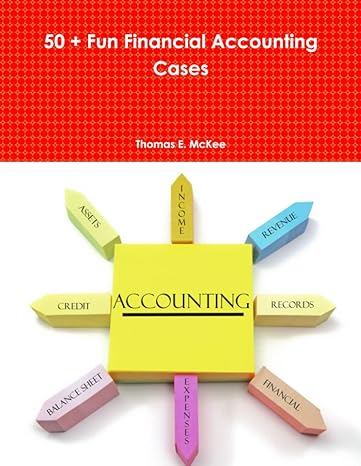Question
On December 31, 2016, Price Corp. (Price) purchased 80% of the common shares of Sault Ltd. (Sault) for $2,040,000. On that date, Sault's shareholders' equity
On December 31, 2016, Price Corp. (Price) purchased 80% of the common shares of Sault Ltd. (Sault) for $2,040,000. On that date, Sault's shareholders' equity consisted of common shares of $1,000,000 and retained earnings of $800,000. Fair values were equal to carrying values for all of Sault's assets and liabilities except for inventory (book value $150,000 less than fair value); property, plant and equipment (book value $250,000 greater than fair value); and bonds payable (book value $30,000 greater than fair value). The financial statements for Price and Sault as at and for the year ended December 31, 2019, were as follows:
Statements of financial position As at December 31, 2019 Price Corp. Sault Ltd. Cash $ 380,000 $ 630,000 Accounts receivable 570,000 520,000 Inventory 1,060,000 960,000 Property, plant and equipment net 2,150,000 1,680,000 Investment in Sault 2,040,000 $6,200,000 $3,790,000 Current liabilities $1,410,000 $ 750,000 Bonds payable 2,230,000 860,000 Common shares 900,000 1,000,000 Retained earnings 1,660,000 1,180,000 $6,200,000 $3,790,000 Statements of comprehensive income For the year ended December 31, 2019 Price Corp. Sault Ltd. Sales $5,860,000 $ 3,750,000 Other revenue 160,000 Cost of sales (4,620,000) (2,140,000) Depreciation expense (270,000) (310,000) Other expenses (530,000) (850,000) Income tax expense (240,000) (180,000) Net income and comprehensive income $ 360,000 $ 270,000.
Additional information:
1. At December 31, 2016, Sault's property, plant and equipment had a remaining useful life of 10 years, and the bonds payable had a maturity date of December 31, 2026. Sault uses the first-in, first-out method to account for its inventory and the straight-line basis to amortize its property, plant and equipment.
2. Each year, goodwill is tested for impairment. Goodwill impairment was $200,000 in 2018 and $0 for all other years.
3. On January 2, 2018, Sault sold a machine to Price for $250,000 and recorded a gain of $60,000. Sault had purchased this machine in 2017. The estimated remaining life of the machine at the time of its sale to Price was six years.
4. During December 2018, Price sold merchandise to Sault for $300,000. At the end of 2018, Sault's inventory included merchandise on which Price had recorded a profit of $30,000. On December 31, 2018, Sault owed $40,000 to Price, which was repaid in 2019.
5. During December 2019, Price sold merchandise to Sault for $400,000. At the end of 2019, Sault's inventory included merchandise on which Price had recorded a profit of $10,000. On December 31, 2019, Sault owed $50,000 to Price for this merchandise.
6. Price and Sault declared dividends in 2019 of $300,000 and 200,000, respectively.
7. Price accounts for non-controlling interest using the identifiable net assets method.
8. Both Price and Sault are subject to tax at a rate of 40%
Required: a) Prepare the purchase price allocation schedule.
b) Prepare the acquisition differential amortization schedule.
c) make a schedule showing the unrealized and realized gains or losses for the year ended December 31, 2019.
d) Prepare the consolidated statement of comprehensive income for the year ended December 31, 2019.
e) Calculate the following items as they should appear on the consolidated statement of financial position as at December 31, 2019:
i) Inventory.
ii) Accounts receivable
iii) Property, plant and equipment
iv) Deferred income taxes
v) Bonds payable
vi) Retained earnings
vii) Non-controlling interest
Step by Step Solution
There are 3 Steps involved in it
Step: 1

Get Instant Access to Expert-Tailored Solutions
See step-by-step solutions with expert insights and AI powered tools for academic success
Step: 2

Step: 3

Ace Your Homework with AI
Get the answers you need in no time with our AI-driven, step-by-step assistance
Get Started


